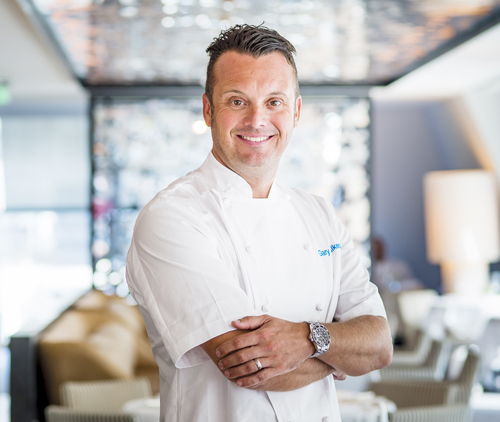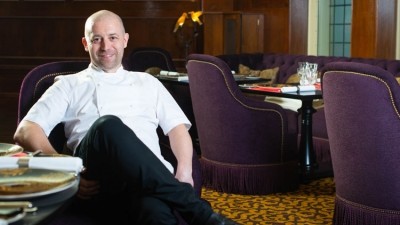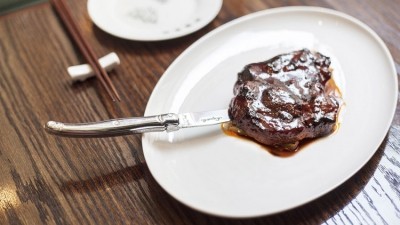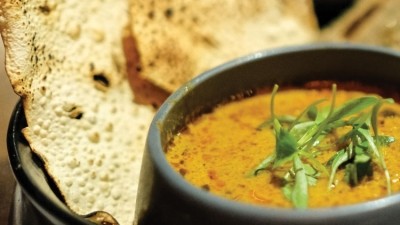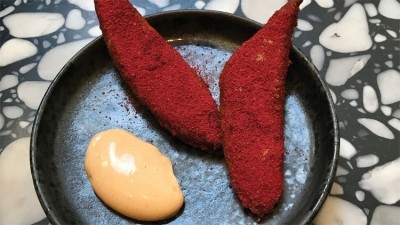Chef Masterclass: Gary Foulkes' hollandaise
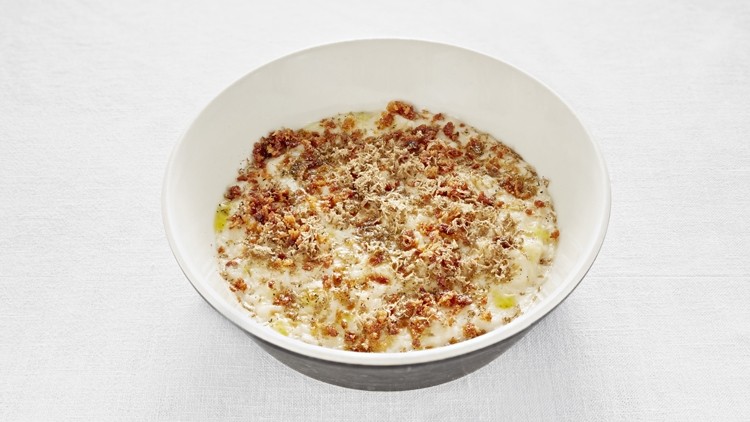
Sauce espagnole, the mother of all brown sauces, for example, or sauce allemande, a velouté thickened with egg yolks.
Sauce espagnole’s name might have had something to do with the use of Spanish ham (long since supplanted by veal) in its preparation, but it is more likely that these sauces were so named because, in French eyes, Spanish people were brown and Germans blond.
And, perhaps, the Dutch appeared even blonder. Hollandaise, which Escoffier promoted to a ‘mother sauce’ a century ago, at the expense of sauce allemande, is all about egg yolks and butter although, at that point, recipes vary. Some would merely add a splash of lemon juice or vinegar to the foamy emulsion while others favour a reduction of shallots and vinegar, perhaps adding spices and herbs: tarragon, bay leaf, chervil, mace, nutmeg or peppercorns.
As mothers go, hollandaise is remarkably fertile. Add chopped tarragon and you have béarnaise; blood orange zest and juice gives maltaise; tomato concassé gives choron; chopped mint gives paloise. There are at least a dozen classic variants, and it is a happy backdrop for more modish flavours. Yuzu hollandaise, for example.
At the Michelin-starred Angler, at the top of the South Place Hotel, head chef Gary Foulkes – the former head chef at The Square, whose classical background includes stints with Richard Neat and Gary Rhodes – is well acquainted with the hollandaise family. “I’ve used them all in the past – asparagus with hollandaise, béarnaise with snails – they all have a smooth lightness to them that’s very harmonious,” he says.
He also uses it in his luxurious version of macaroni cheese, blending it with cheese sauce (sauce mornay, possibly named after an obscure French diplomat, another favourite source of sauce names), freshly picked white crab meat (Foulkes uses large cock crabs from Dorset), hand-rolled macaroni and a cooked chiffonade of leeks. To make the dish even more opulent, he adds generous shavings of summer truffle, both before and after the dish is gratinated.
He makes foolproof hollandaise from a shallot and white wine reduction and egg yolks in a Thermomix on 50°C at speed 4 for 14 minutes, using the paddle and adding the clarified butter at the end, but there are several other methods: the classic way is in a double boiler (or a bowl perched just above simmering water).
Or you can use a blender or food processor and make it like mayonnaise – both sauces rely on an emulsion of eggs and fat for their thickness – adding hot butter to the eggs in a thin stream; or, according to Harold McGee in On Food and Cooking, you can simply put all the ingredients in a cold pan and heat them gently until the sauce comes together. The one precept every method shares is that the eggs must not get hotter than about 55°C or you will end up with very buttery, scrambled eggs. If the mixture looks like splitting, remove from the heat, whisk in a few drops of cold water and it should return to normal.
Foulkes makes his own, very rich, egg pasta for the macaroni. “We use 650g of 00 pasta flour to five whole eggs and four yolks,” he says. “We cut the rolled pasta into small rectangles, rest it, then roll it into macaroni. But you could use high-quality dried pasta: just cook it until it’s al dente before mixing it into the crab and sauces.”
The cheese sauce is a straightforward white sauce, flavoured with beaufort, a hard, raw Alpine cheese similar to gruyère, but without the holes. Mixed with the hollandaise, it becomes lighter and less floury.
Hollandaise has a reputation for being difficult, but, because of its extraordinary versatility, it is worth mastering. Just have courage. Dutch courage, perhaps.
Gratin of crab, beaufort and leeks with hollandaise (Serves 4)
Ingredients
For the cheese sauce
40g unsalted butter
40g plain flour
400ml warmed whole milk
150g Beaufort, grated
For the hollandaise sauce
50g finely sliced shallots
75ml white wine
75ml white wine vinegar
3 large egg yolks
300ml clarified butter, warm
For the gratin
2 leeks, finely sliced and washed
15g unsalted butter
Juice of half a lemon
480g hand-picked white crab meat
400ml cheese sauce
16 hand-rolled macaroni pieces
75ml hollandaise sauce
200g summer truffle
75g fresh sourdough bread, crust removed, blitzed until fine
25g unsalted butter
Extra virgin olive oil
Method
1. For the cheese sauce, heat the butter and stir in the flour to make a roux. Stir for a minute or so, then gradually add the milk. Stir in the cheese, season with salt and pepper and reserve.
2. For the hollandaise, put the shallots, white wine and vinegar in a small saucepan and boil until reduced to a tablespoonful. Strain into a bowl, discarding the shallots, then add the egg yolks. Put the bowl over a pan of boiling water and whisk until pale and fluffy, then gradually add the clarified butter, whisking all the time, and heat until the emulsion thickens. Keep warm.
3. Sweat the leeks in the butter until soft. Add the lemon juice, cook for another minute, season and reserve.
4. Blanch the macaroni in boiling, salted water for one minute and drain. Add to the crab, then gently mix with the leeks, warm cheese sauce, hollandaise and half the truffle, shaved. Split between four ovenproof gratin dishes, ensuring there are four macaroni in each dish. In a frying pan, gently cook the breadcrumbs and butter together until golden. Reserve.
5. Put the gratin dishes under a medium-hot grill until golden brown. Remove, then sprinkle each dish with the toasted breadcrumbs. Shave the remaining truffle over the top of each gratin, and finish with a drizzle of olive oil.
Serve immediately.
This is a web version of an article that first appeared in the October issue of Restaurant magazine, the leading title for the UK's restaurant industry. For more features, comment, interviews and in-depth analysis of the restaurant sector subscribe to Restaurant magazine here.
